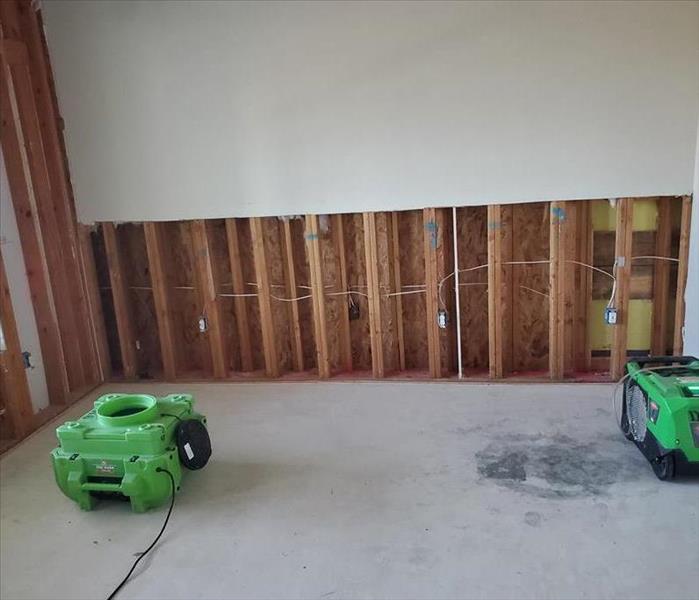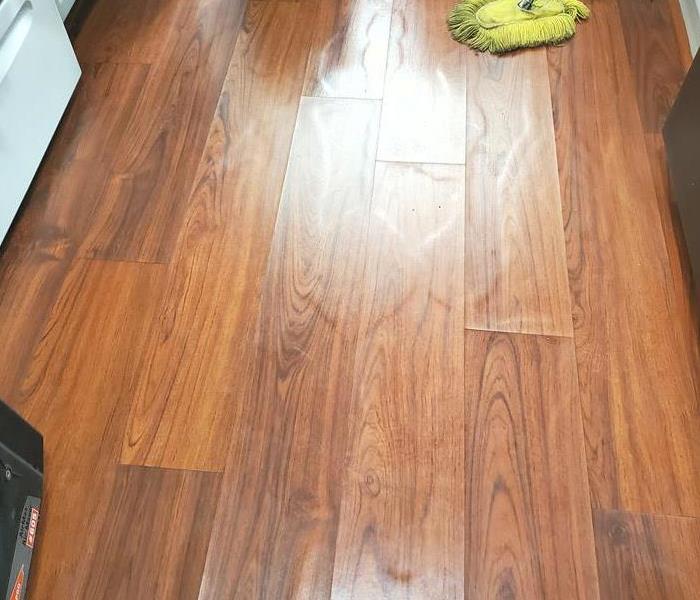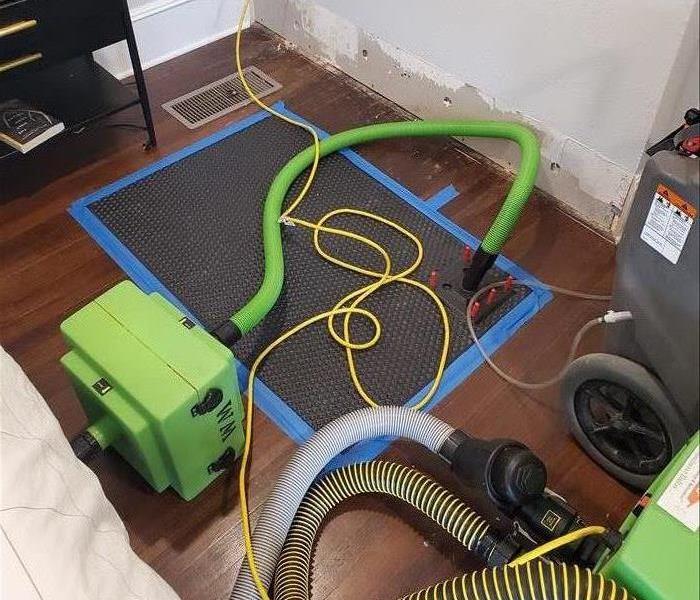Recent Water Damage Posts
What is Water Damage Mitigation vs Restoration
8/22/2023 (Permalink)
 Room with floor and some drywall removed with drying equipment
Room with floor and some drywall removed with drying equipment
Water Damage Mitigation vs Restoration
When an event occurs that causes the need for water damage services, you will hear a variety of terms being used. Two of the most common terms that are often incorrectly used interchangeably are water damage mitigation and water damage restoration. These are actually 2 separate parts of the process.
Water Damage Mitigation
Water damage mitigation occurs soon after the initial water event. It prevents additional harm from water and protects the residential or commercial property structure along with the contents. It involves extracting water, drying, cleaning and disinfecting the affected areas.
Water Damage Restoration
Water damage restoration typically takes place after the mitigation has been completed. This step repairs and restores the water damage to the property and belongings. It concerns replacing damaged materials, eliminating mold, repairing roof damage. The goal here to get the property and contents back to preloss condition.
Need Water Damage Assistance?
Professional water damage mitigation and restoration companies are your best bet to have a successful completion of the process. Call the experts at SERVPRO of Dallas Central should you need help!
How Much Vinyl Plank Flooring to Remove Due to Water Damage
6/20/2023 (Permalink)
 Vinyl plank flooring with visual water damage
Vinyl plank flooring with visual water damage
A home in the Five Mile Creek area of South Dallas had a sink leak that caused the need for water damage mitigation services. Water seeped into the vinyl plank floor in the kitchen, dining room and living room. This can cause visual damage through bubbling at the seams or down the plank. The visually damaged area of course needs to be removed but anything more than that?
Once a piece is pulled up, the underside can be reviewed to determine if water is still existent, and the neighboring piece needs to be removed as well. Planks should be continue to be removed until no more water is identified on the underside of the plank.
Often, flooring in the entire room or possibly the entire continuous flooring area will need to be removed. Flooring is constantly evolving and a style or color that is available today may not be available in a year. Replacing a portion of the floor means matching needs to occur and that is typically an issue.
In addition, the interlocking nature of vinyl plank flooring can make it challenging to just replace a portion.
Let us know if you need help removing a water damaged floor, call the experts at SERVPRO of Dallas Central!
Can Flooring be Saved After Water Damage?
4/20/2022 (Permalink)
 Specialty drying mat equipment drying down a hardwood floor
Specialty drying mat equipment drying down a hardwood floor
Unfortunately, water damage happens more often than we would like. 1 out of every 20 homeowners makes an insurance claim each year with around a fourth being from water damage/freezing. When a water damage event occurs, it can create a lot of havoc for the property owner.
On the front side of things, there are typically 3-5 days of drying out the structure. During this time, it will be determined what part of the structure is salvageable and what may just need to be removed to gain access to further wet areas and materials like insulation inside walls.
On the back side of things, there is the reconstruction of the structure. This may require packing out rooms or an entire house and moving offsite before construction can begin. This can take quite some time to schedule and complete. A lot of this decision rests upon flooring. Does the flooring need to be removed? If so, what type of flooring is it? Carpet, tile, laminate, hardwood, engineered hardwood? Each of these takes a different amount of time depending on the available material and process.
The type of flooring will determine if there is any hope of salvaging it. Often you will find tile in bathrooms, kitchens and laundry rooms…and for very good reason. Tile is usually salvageable. If tile is showing some give, or cracks have appeared since the event, the tile may need to be replaced. If not replaced, tile should be monitored over the next 12 months.
A general rule of thumb is laminate or engineered hardwood will usually need to come up. Engineered hardwoods look great these days but they are made out of layers of wood that can swell and degrade when wet. Glued down engineered hardwood can be the most challenging to remove and thus can increase the length of the process.
Carpet often can be saved but the carpet pad underneath needs to be replaced. The pad is like a sponge and retains moisture and odor. Fortunately, most carpet pad is pretty cheap and easy to replace. One of the tell tale signs that a carpet needs to be replaced is delamination. Delamination is when the backing to a carpet comes apart from the fibers.
Last but not least are hardwood floors. Different types of wood will be affected in different ways. Usually, if cupping or buckling is going to occur it will happen in 7-14 days. Sometimes the floor can settle back down, and sand and seal may be all that is needed. However, the key is bringing the moisture level back to par which is typically around 16. Every house and type of wood can have their own "standard". If wood cannot be brought back to the benchmark, it is usually recommended to replace the floor.
If you have a water damage event and have questions about your flooring, don't hesitate to give SERVPRO of Dallas Central a call at 214-664-9522!
What are Some Home Issues to be Aware of After Heavy Rains
4/7/2022 (Permalink)
As the saying goes, April showers brings may flowers.... April is often the wettest month for most areas in the US. Texas gets a lot rain in April and especially May. Lots of water over a consistent period of time can cause numerous issues. Water is very intrusive and can find it's way into a building structure in a variety of ways.
Buildup of leaves in gutters can lead to water overflow and finding alternative paths to the ground. Water can degrade wood structures and cause water inflow. The simply solution here, make sure to clean your gutters regularly but especially during this time of the year.
Another common issue that we see is water coming in around windows. Water seeps in and can rots wood studs along with causing growth and discoloration on the inside. This can have a bad odor as well as cause health issues. The answer here is to have your windows checked to make sure they are properly sealed. Older windows can allow for a lot of seepage, if possible it may be best to just install new windows.
A third habitual offender is poor drainage especially in connection with a crawl space. This can cause water and humidity to get stuck under a house. This can percolate into the house and create higher humidity situations leading to growth and degradation of the interior. Flooring can be seriously effected causing major buckling of hardwood floors. In this situation, consulting a structural engineer could be of benefit. Potential fixes include installing French drains, permanent sump-pumps, permanent dehumidifiers, etc.
These are just a few of the problems that can occur during our rainy season. If something should happen, don't hesitate to give us a call at SERVPRO of Dallas Central.

 24/7 Emergency Service
24/7 Emergency Service


